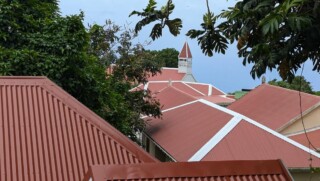Alliance reveals names of African ancestors from Golden Rock plantation in Sint Eustatius
ORANJESTAD – The Sint Eustatius African Burial Ground Alliance has unveiled the names, ages, professions, and religious beliefs of 96 ancestors who were once connected to the Golden Rock plantation in Sint Eustatius.
This is part of the project Remember Statia: Tracing Our Origins that encourages the community of Sint Eustatius to make the African history of the island more visible and personal. The names can be found in this document.
The names in the document are from the emancipation records of Sint Eustatius. They display the name, surname, age, gender, profession, and religion of the people from the Golden Rock plantation who were ‘emancipated’ in 1863.
For Sint Eustatius, this involved a total of 1,075 individuals. The Sint Eustatius African Burial Ground Alliance reports that these are not the names of the 69 ancestors whose remains were excavated in 2021.
Kenneth Cuvalay, project leader for Sint Eustatius: “Obtaining the names of our ancestors from archival sources and making them known is important to change the narrative. Our ancestors were not just enslaved; they were people with a name, a face, a profession, a story. They came from different countries in the African continent, had knowledge, values, and traditions. They survived the crimes and horrors of the Middle Passage; our ancestors live, as it were, within us.”
Marginalized history
According to Cuvalay, Black communities have long been marginalized and isolated without the means to adequately protect or commemorate those ancestors with the respect they deserve, according to the Alliance. “It’s time to change that. We need to tell their story; the past is never truly over. Our ancestors were ‘emancipated’ in 1863, but they were not given land to live on and were not compensated in any way for hundreds of years of abuse, violence, and exploitation,” Cuvalay adds.
According to the Alliance, understanding this is crucial to comprehend the current situation. “Moreover, Sint Eustatius is still being colonized by the Netherlands, and the African community is still being enslaved in other ways, such as socioeconomically and through the destruction of our historical-cultural heritage,” says Cuvalay. “Preservation is power, and in Sint Eustatius, it’s clear whose heritage is being preserved. It’s not our heritage; it belongs to the colonial powers.”












